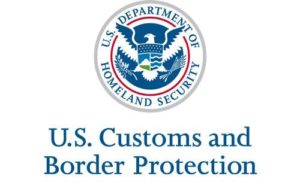What is C-TPAT Certification?
The Customs-Trade Partnership Against Terrorism (C-TPAT) is a voluntary program established by the United States Customs and Border Protection (USCBP) to enhance the security of international supply chains. It encourages businesses to adopt best practices and security measures to prevent terrorism and illegal activities in the global trade landscape.
Benefits of C-TPAT
Participating in the C-TPAT program offers several advantages, including expedited border clearance, reduced inspections, and enhanced supply chain security. By complying with C-TPAT requirements, companies demonstrate their commitment to safeguarding the integrity of their cargo shipments.
The Importance of C-TPAT Security Seals
How do C-TPAT Seals Protect Cargo?
C-TPAT security seals play a vital role in protecting cargo from tampering, theft, and unauthorized access. They act as a barrier, providing visible evidence of any attempts to compromise the cargo’s integrity. Besides, it ensures the cargo is fully comply under USBP C-TPAT policy for expedite clearance.
Features of C-TPAT Security Seals
C-TPAT security seals possess specific features that distinguish them from regular seals. These features include the ISO PAS 17712 marking, unique serial numbers, included in USCBP C-TPAT Policy participant database and tamper-evident elements that indicate any signs of tampering.
ISO PAS 17712 Marking
C-TPAT security seals prominently display the official ISO PAS 17712 marking This marking serves as a visual indicator that the seal meets the program’s standards and requirements.
Unique Serial Numbers
Each C-TPAT security seal is assigned a unique serial number. These serial numbers allow for traceability and accountability throughout the supply chain.
Tamper-Evident Features
C-TPAT security seals are designed with tamper-evident elements that provide visible evidence of any attempts at tampering. These features include indicators such as broken lines or altered seals, indicating potential unauthorized access.
Verifying C-TPAT Security Seals
How to Check the C-TPAT Database
To verify the authenticity of C-TPAT security seals, businesses can check the official C-TPAT database. By cross-referencing the seal’s details with the information in the database, companies can ensure the legitimacy of the seal.
How to Verify C-TPAT Compliance
To validate the C-TPAT compliance on a security seal, compare it with the official guidelines provided by the USCBP. Look for accurate design, colors, and overall appearance. Any inconsistencies may indicate counterfeit or unauthorized use of the logo.
How to Examine Tamper-Evident Features
Inspect the tamper-evident features of the seal to detect any signs of tampering. Look for broken lines, altered indicators, or visible damage that suggests unauthorized access. Genuine C-TPAT security seals are designed to provide clear evidence of tampering.
Beware of False Claims
How to Spot False Claims
Some security seal manufacturers may falsely claim that their seals are “C-TPAT compliant.” However, according to the USCBP C-TPAT guidelines, there is no specific designation for a “C-TPAT compliant seal.” It is crucial to focus on the adherence to the ISO 17712 standards, which are referenced by C-TPAT.
What to Do If You Suspect a False Claim
If you suspect a false claim regarding C-TPAT compliance, reach out to the USCBP or relevant authorities to report the issue. It is essential to maintain the integrity and security of the supply chain by addressing any fraudulent claims.
Conclusion
In conclusion, C-TPAT security seals play a significant role in ensuring the integrity and security of cargo within international supply chains. By understanding the features of C-TPAT security seals and verifying their authenticity, businesses can contribute to a safer trade environment.
It is crucial to remain vigilant against false claims and focus on adherence to the ISO 17712 standards. By doing so, you can strengthen your supply chain security and protect against tampering and unauthorized access.
